
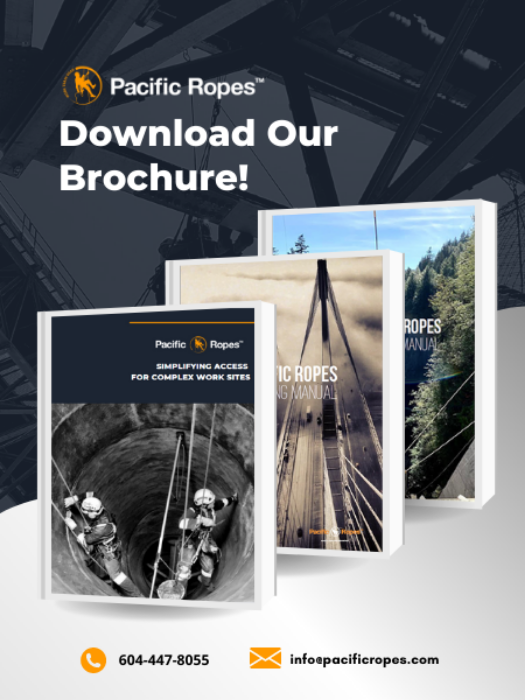
Let Pacific Ropes provide your team with a safer more efficient solution for your access needs

Efficient Solutions

Collaborative Approach

Professional and Knowledgeable Teams
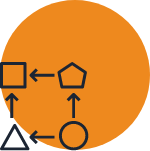
Adaptable and Dependable
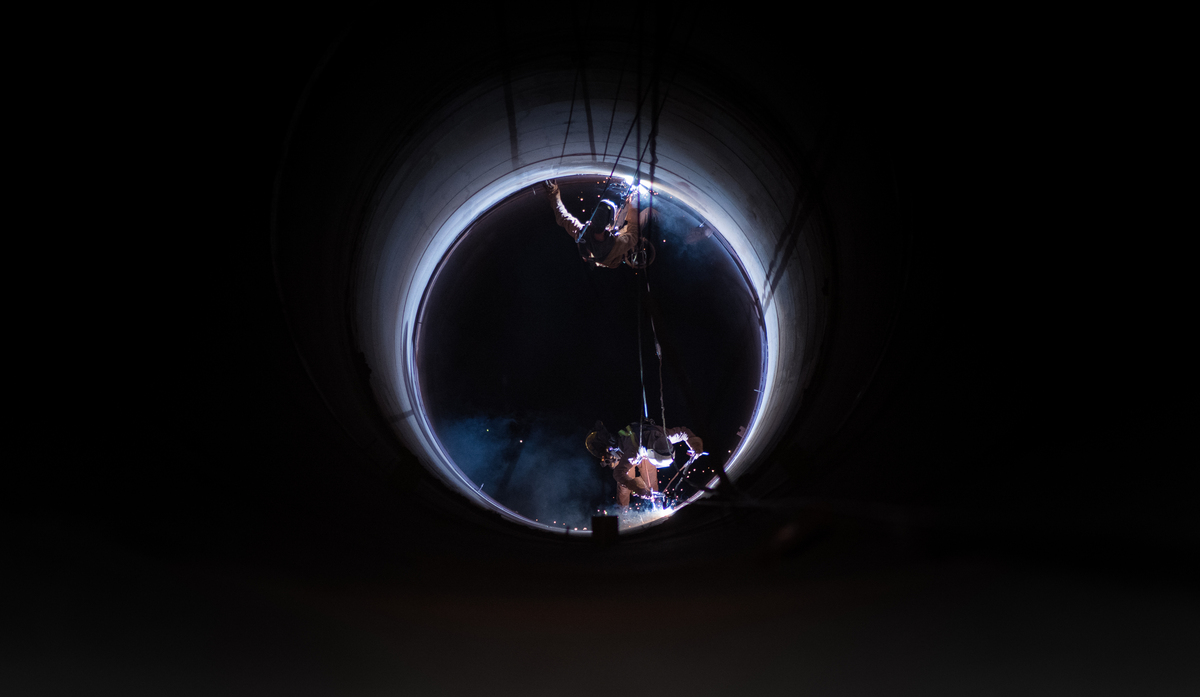
Do you constantly struggle to find time to complete required maintenance work scopes? Are your current access solutions cutting into production? In this case study, we discuss how we were able to help our client complete inspection and repair on a steel stack, with a limited 2 week window.
Learn More >SPRAT (Society of Professional Rope Access Technicians) is based in America and aims to promote the safe use of Rope Access within our regulatory bodies here in North America. SPRAT training also consists of three levels of certification, which we host every month in BC only. Our methods of teaching aim to lay out the basics as clearly as possible; while inspiring you to problem solve and to be as efficient as possible. Team collaboration is essential for successful Rope Access technicians and we embody that nature within our Rope Access training.
SPRAT Training >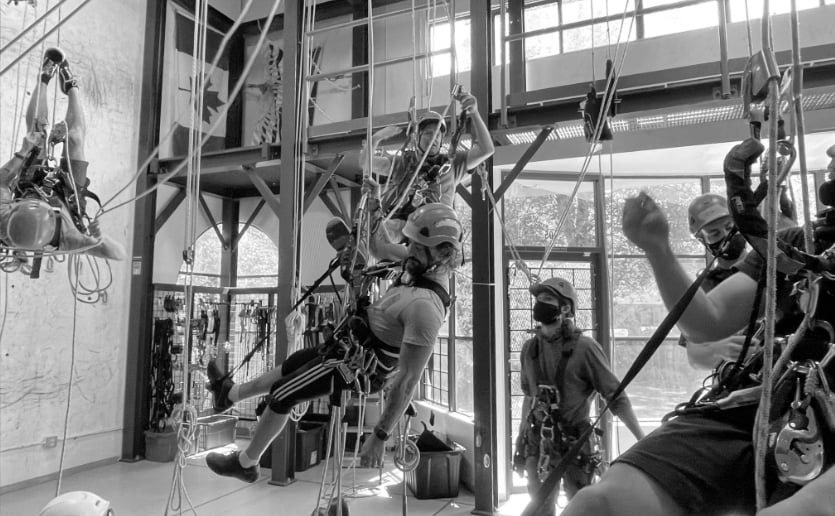
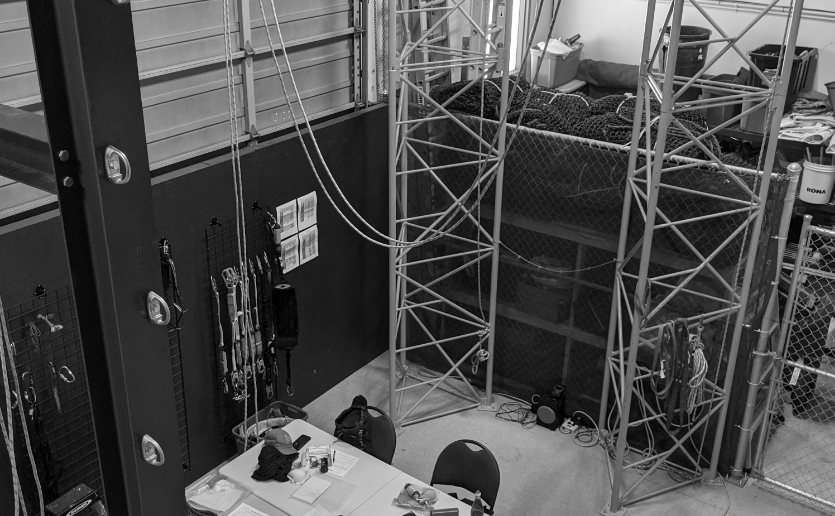
Our Tower and Climbing Rescue program comes in two parts, Climber 1 and Climber 2. Both are in line and approved by STAC (The Structure, Tower and Antenna Council). This course is meant for technicians who have to climb and work on telecommunication towers. Custom and on-site training is available for this course.
Tower Training >Gain competency in the thorough examination of Personal Protective Equipment (PPE). This Petzl course is perfect for individuals who are responsible for equipment and work at height PPE inspections. But, we encourage all technicians to take this course to gain a better understanding of equipment inspection, which ultimately prevents equipment failure on site.
Petzl PPE Inspection >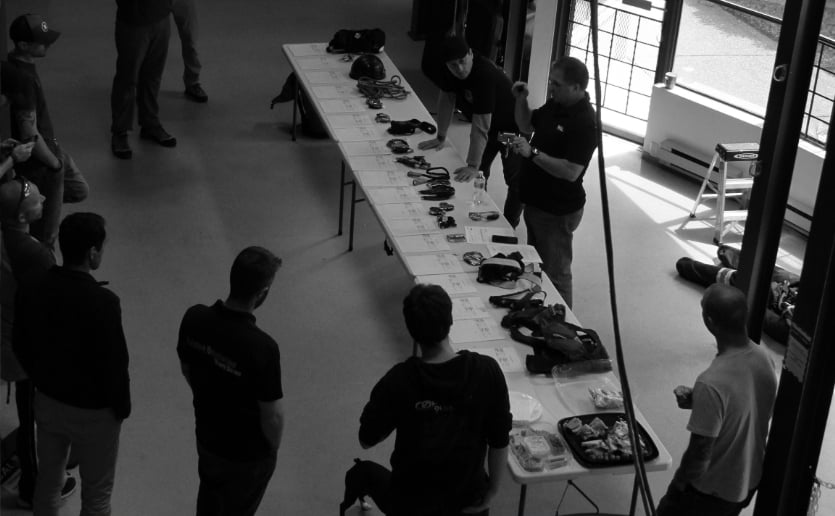
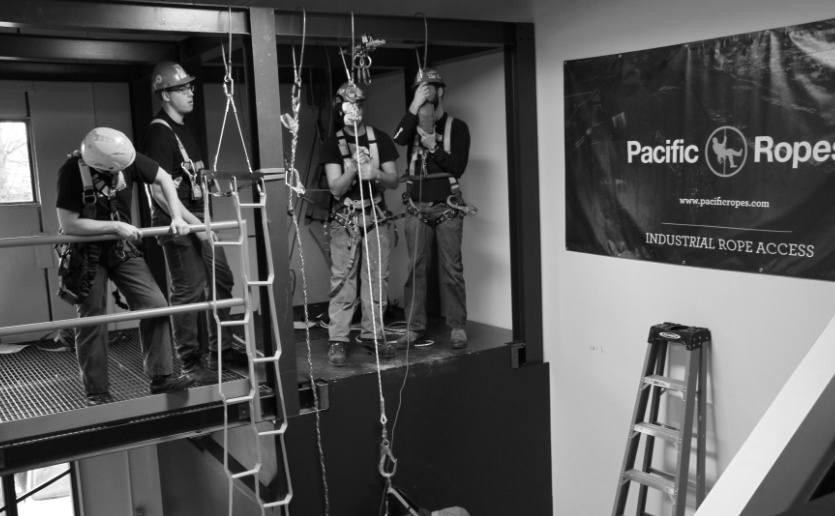
We understand that sometimes you need training for a specific work site or structure. Understanding the rescue procedures, protocols, and equipment for a particular job is important and you may not have someone qualified in-house to run this program. Our training team has helped many companies in this scenario with our custom rescue training. These programs can be completed at our facilities or on site.
Contact us >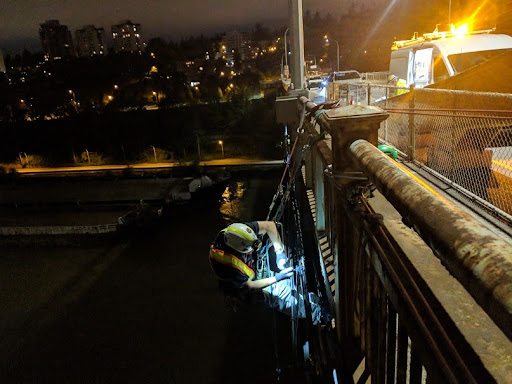
Cable pulls, LED retrofits, Ballast changeouts
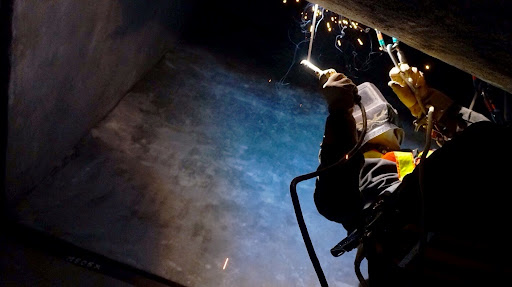
Our mobile welding services supports construction teams, who need access to difficult locations. We do this by eliminating scaffolding or bulky access options so that projects can be completed on time, under budget, and with zero incident results. No project is inaccessible for our multi-disciplinary teams.
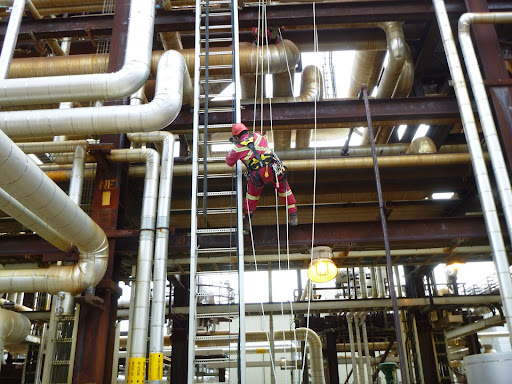
Noise control, Heat loss protection.
Based on the concept of “doubling up,” Rope Access is a system consisting of ropes and hardware that are attached to a worker in a full body Rope Access harness. Using trained techniques, the worker can utilize this system to go up, down, and around a difficult work location. In addition to this flexibility, a Rope Access Technician can be supported in suspension at their work location all while avoiding any worksite hazards. Below is an illustrative breakdown of the rope access system.
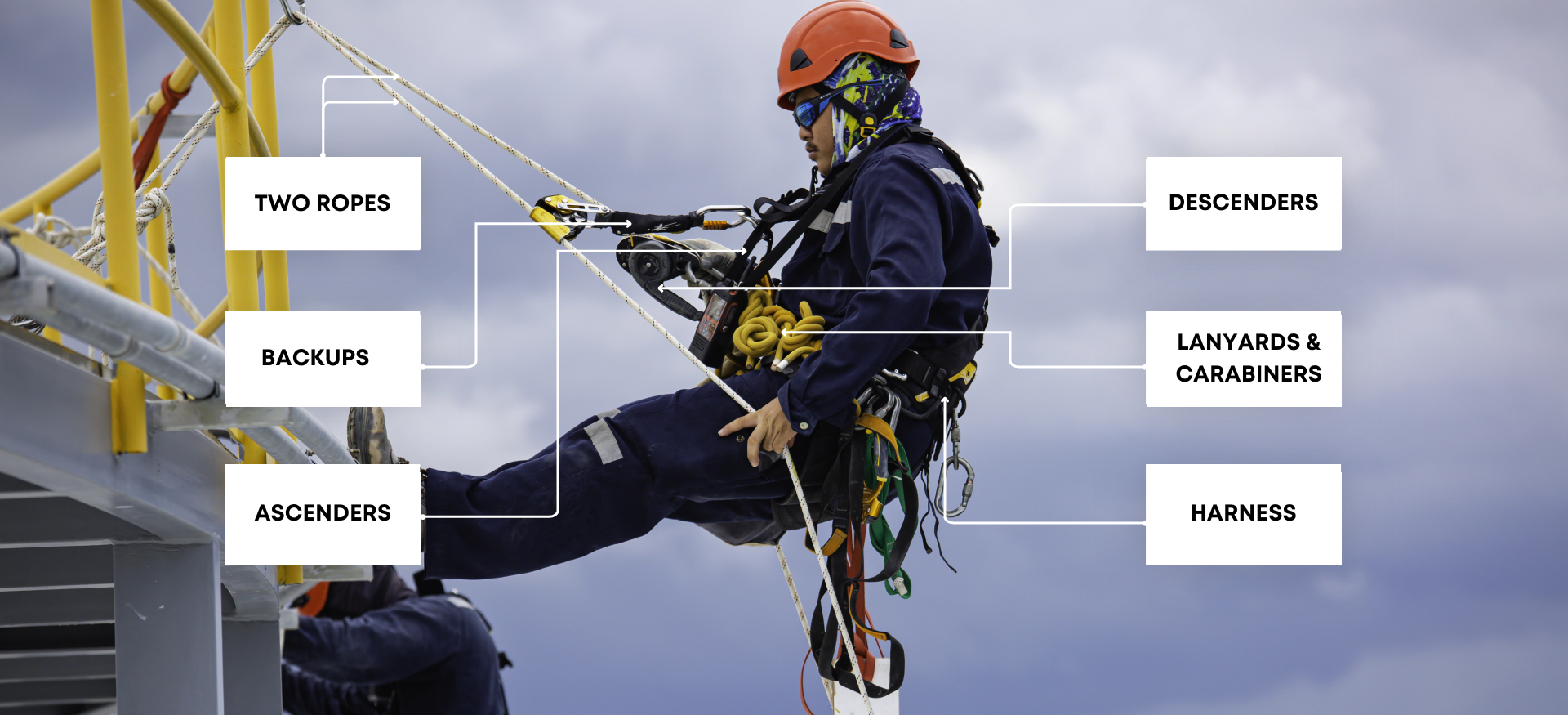
Comparatively, rope access can relieve budgets on average by 50% more than using scaffolding. In fact, it is more cost efficient because scaffolding requires time and space to set up and take down, as well as being a fixed structure which limits flexibility in operations. Rope access can offer equal access, if not more than conventional scaffolding options.
Think of us like a multi-tool for work at height and confined spaces. Whatever needs to get done, we've got a team who can do it. Check out our services here:
ServicesThere are five components to rope access that each hold their own safety checks and balances in place. Together these five components create a synergy of work at height that is centered around one thing: safety. To read more about these five safety components, click below.
Rope Access SafetyIn Canada, each province differs in how they regulate work at height, including rope access. However, rope access technicians are certified by either IRATA or SPRAT, which are the two rope access associations that have the biggest influence in North America. Companies who choose to use rope access will follow either IRATA or SPRAT regulations. If there are specific rope access regulations within a province, generally, these regulations will defer the specifics back to either IRATA or SPRAT standards.
In Canada, the certifications that are recognized and accepted are IRATA (Industrial Rope Access Trade Association) and SPRAT (Society of Professional Rope Access Technicians). Each certification has three levels that can be obtained. Minimum time experience and rope hours are required before a technician can upgrade to the next level. Each level requires certain amount of days of training and a third party examination. To learn about the different certifications and how training is conducted, please visit our training page!
TrainingDepending on your end goal, it may make more sense to bring in Pacific Ropes as your third party rope access provider or, we can help you build your own rope access team. Or, if can be a combination of both. Contact us to find out more.
Contact usOnce your employee passes their level 1, they will need to work under a L3 rope access supervisor. This requirement is explained in the IRATA and SPRAT regulations, which is reference by provincial regulation in BC and Alberta. But, regulation aside, a level 1 rope tech can maneuver themselves on a rope access system but they do not have the experience or training to be able to perform advance rescues and rigging. Therefore a L3 Supervisor is required on site to manage the overall safety of the rope access work. If you do not have a L3 Supervisor staff member, we can help you hire one through our job postings.
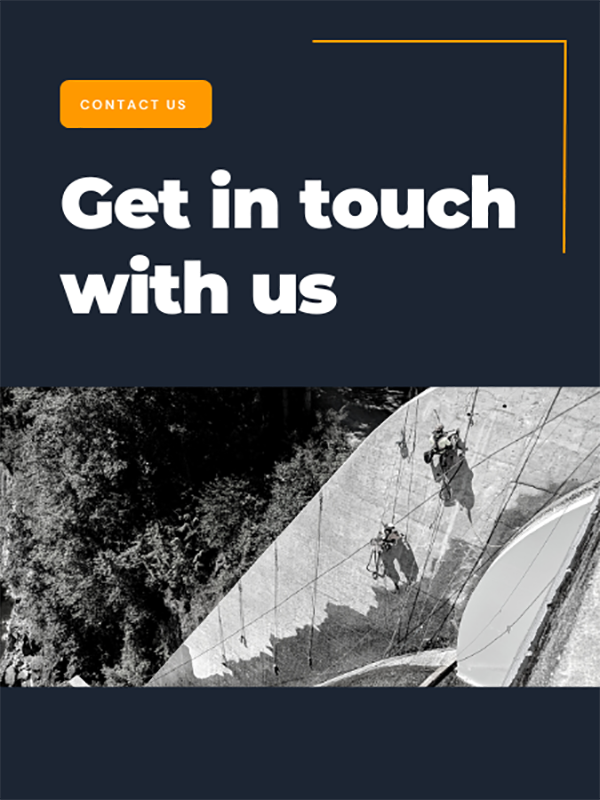
Helping construction and energy industries access hard-to-reach locations with custom work at height solutions

